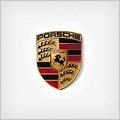
PORSCHE 911 GT2
Generations Timeline, Specs and Pictures

The 2007 Porsche 911 GT2 was the fastest Porsche road car ever built to that time.
It could do a 300 kph (186.5 mph) in just 33 seconds. And it wasn’t just about speed.
Over the years, Porsche launched a different road-going version to get the homologation for FIA racing in GT3 or GT2 categories. First, they were afraid that the car will be a flop on the market and the price will be too high. Then, the car-maker understood that people will pay hard money for a car that will impress everyone in friendly weekend races at the local race-track.
From the outside, the GT2 resembled the Turbo with the air-intakes on the rear wide fenders. The front bumper was inspired by the same brother but without the fog-lights. Its sleek profile was disturbed only by the big wing in the back, mounted on the engine lid. In the back, the car-maker didn’t want to brag more and installed only two exhausts.
Inside, the GT2 featured the same dashboard design as its siblings, with some adjustments. The five dials instrument cluster featured the GT2 logo in the tachometer. The PCM (Porsche Communication Management) infotainment system was on the center stack, even though was not needed on the race-track. The slim race-bucket seats were made out of carbon-fiber to reduce weight and, of course, they couldn’t tilt. Strangely, the car was fitted with cruise control. Maybe it was good to not exceed speed in the pit-lane.
The flat-six engine was a 530 hp monster. It was available exclusively with a six-speed manual and a light, single-mass, flywheel. The twin-turbo system allowed a smaller lag and, since they were with Variable Turbine Geometry (VTG) they could hold a flat torque curve between 2200 rpm and 4500 rpm.

The wizards from Porsche decided that even the Turbo version was too light when compared with what the brand stood for.
So, after a debate, they came out with the mighty GT2 version.
The 996 Porsche GT2 was introduced in late 2002 and it was built according to the FIA standards for the GT2 racing category. That said, the car had to have a two-wheel-drive system and the engine was restricted to displacement and power. In order to receive that racing approval, the car-maker had to build a street version. And that’s how the fastest 996 Porsche was born.
From the outside, it featured a complex aerodynamic package, with a carried-over front bumper from the Turbo, but modified to increase the cooling with an air-exhaust on top of it. A lip-spoiler was added under its apron. Part of its bodywork, with the enlarged rear quarter-panels was taken from the Turbo. A huge rear wing was placed to add some downforce at high speeds.
Inside, the car was stripped by almost anything that wasn’t necessary. The rear seats were gone, the AC was an option and the infotainment unit was kept to a stereo. For the interior trims, carbon-fiber elements were placed on the center console and stack, and on the instrument cluster. The race-bucket seats were signed by Recaro and they featured two large holes for a race-harness. Unlike the GT3 RS, it wasn’t fitted with a roll-cage.
The engine was carried-over from Porsche Turbo, but it was enhanced to produce more power. The only available transmission was a 6-speed manual, and the suspension was stiffened. Despite all the racing technologies involved, the car was a great companion even as a daily driver.

Porsche is one of the most famous cars on the race-tracks around the world with wins in almost any race-classes.
The introduction of the GT2 category forced the car-maker to produce a radical road-car.
The GT2 was a race car adapted for the road. The Porsche engineers started with a Porsche Turbo, stripped it down to essentials, cut some parts, and added some parts to it. The result was a radical-looking super-sport car, which could do 295 kph (183 mph). But it was, basically, a Turbo with a rear-wheel-drive and lighter and wider body.
The front apron was replaced with a new one, which added fins to the sides and took the three-piece light-alloy wheels from the GT3 RS version. In the back, a huge fixed wing with air-scoops in struts was installed to increase downforce. The GT2’s wider fenders were made from lightweight fiberglass to help the sports car lose more weight. Porsche actually cut the Turbo’s fenders and replaced them with bolt-on plastic pieces.
The interior was stripped-down to essentials. It featured a ventilation system, no AC, and no stereo. The race-bucket seats were fitted as standard and, of course, there were no seats in the back. At least, they left the carpeting on the floor. To obtain the homologation, Porsche had to build the car road-legal and that meant to put a steering wheel with an airbag. The only comfort feature in the car was the power-windows and the car-maker choose to install them since their mechanism was lighter than the cranked one.
The engine was a re-worked 3.6-liter turbocharged unit from the Turbo model, but it was enhanced to produce 435 hp. It was paired exclusively with a 6-speed manual with racing gears.























































